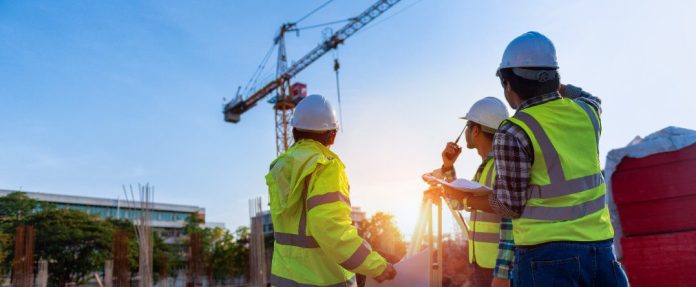Infrastructure is at the root of virtually every aspect of the modern world, and the backbone of that infrastructure is the construction that makes it a reality. Without sound infrastructure in a community, the livelihoods of people and businesses are at stake — yet according to a report by the American Society of Civil Engineers (ASCE), there is an “infrastructure investment gap” of nearly $2.6 trillion this decade that, if unaddressed, could cost the United States $10 trillion in lost GDP by 2039. We need to do better — and using precision technology in construction is an essential part of the solution.
Reliable infrastructure provides society with basic needs, from access to clean drinking water and energy for homes and vehicles, to the routes for the supply chain movement essential to global trade. The cold hard truth is that the current rate of construction isn’t adequate to meet projected infrastructure needs. Beyond spending, productivity growth in the construction industry has flat-lined for decades leaving a $1.6 trillion productivity opportunity to close the gap, according to the McKinsey Global Institute. To address this opportunity, the adoption of precision technology is necessary.
Precision technology in construction refers to a combination of advanced technology such as AI, computer vision and machine learning to help automate tasks and take the guesswork out of measuring, clearing, grading, building and other duties of contractors. To combat resource depletion and the labor shortage while accommodating the increased demand brought on by a growing population, contractors and construction equipment manufacturers must adopt this innovation to get more done with greater efficiency and accuracy, and less disruption.
Contractors face ever-changing challenges in infrastructure construction and maintenance. Some of these variables impact productivity, such as the location of material, the use of skilled labor, and the coordination with other contractors or subcontractors. They are expected to navigate these challenges all while being under increasing pressure to achieve more with less on tighter deadlines. These constantly advancing obstacles call for even more advanced solutions and innovation in order to accommodate future needs. Precision construction technology is essential for the contractors building the foundation for generations to come, and the infrastructure that connects, powers and supports a growing world.
By leveraging precision aids such as GPS/GNSS, connectivity and machine learning, contractors boast the power to move tons of material with greater speed and efficiency. The precision of this tech enables contractors on construction sites to execute on plans more accurately. For example, before many jobs can begin on a construction site, grading or sculpting areas of the land is usually required. By utilizing equipment that places 3D plans and GNSS receivers on the machine, the technology handles the precise work automatically ensuring the right grade the very first try, jumpstarting the rest of the construction project at hand. In many cases, this type of technology allows contractors to mitigate labor challenges by quickly making new operators more effective.
Closing the growing infrastructure gap is an uphill battle with increasing variability, unpredictability and adversity led by labor shortages, workflow inefficiencies and finite resources. According to the World Economic Forum, the world is expected to reach a $15 trillion infrastructure gap by 2040 in order to support global economic growth, more than $3 trillion of which is in the United States alone. This fix is not as simple as building new infrastructure from a blank slate, but also maintaining, fixing and at times replacing aging infrastructure that needs rehabilitation and renovation in order to keep the communities it supports functioning efficiently.
Further, due to the demanding, challenging nature of construction, the industry has been hit hard by both a labor and skilled labor shortage, and has an aging workforce in need of support. According to the CDC, employment of workers aged 65 or older is growing by 117% over the next 20 years. There are not enough workers to meet current and future infrastructure demands. In addition, inefficient processes and disparate solutions can cause confusion or redundant tasks on the job site, promoting unnecessary delays and added risk in an already challenging profession.
Obstacles and errors are inevitable in construction — as with any industry — but when it comes to infrastructure construction, downtime and inefficiencies can be the difference between staying connected in times of emergencies, having safe roads to travel on, or having equal opportunities available in a community. With precision construction technology, contractors are provided with visibility into the health of their machines from any place at any time, meaning that issues are resolved in a quicker, more streamlined manner by means of machine connectivity via telematics.
With the automation afforded through the communication of telematics, contractors can take a preventative approach and mitigate issues before they occur, minimizing downtime and keeping machines performing optimally on site. Through this advanced technology adoption in infrastructural construction projects in particular, contractors can better utilize their resources and limit their work site footprint with optimized workflows.
Empowering contractors to sustainably tackle the growing infrastructure demands that they are taxed with amid the skilled labor shortage with greater efficiency and accuracy, and less disruption, starts with an adoption of advanced precision construction technology in their equipment. When it comes to the future of our infrastructure, front line construction workers must first be afforded with the tools they need to confidently build infrastructure that lasts — smarter, safer, more sustainably — while providing avenues for contractors to take control of their workday and grow their business.

